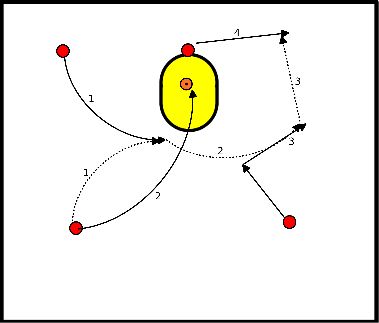Korfball drills for technique attack / score
- Per person, everyone must score 10 through balls, this goes in groups of 3 or 4.
- In case of a miss, the whole group goes to the other side of the field on pace run and back.
- The one who missed takes the chance again.
- Until 10 are scored per player.
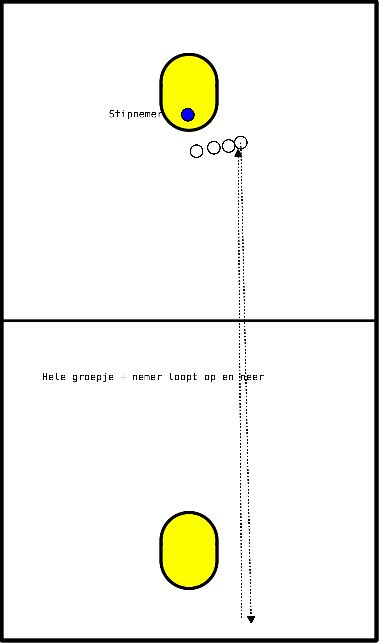
- 4 posts in a square.
- 4 attackers.
- 1 attacker.
- 3 defenders.
- The attacker must find the free post.
- The defenders must therefore make it as difficult as possible and communicate.
- Variants:
- Only through balls.
- Only shots.
- x number of goals etc.
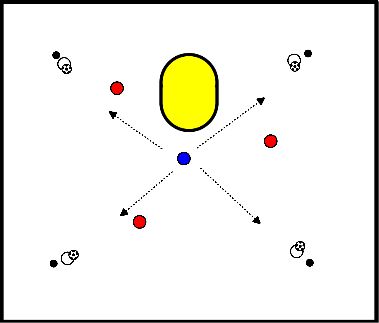
- Make a square around the basket with two people in front and two in the back (in a triple team, one person in the back).
- Play around the basket.
- As soon as the ball is played from the front to the back, the thrower immediately fills in the rebound.
- In front the vacant spot is filled in by the other player who was in front.
- He now receives the ball from behind and shoots.
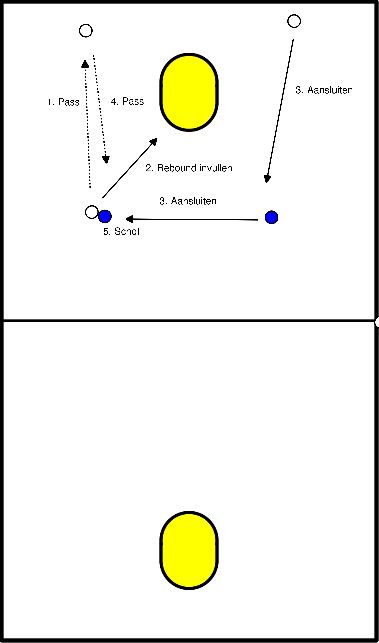
Goaltender throws to forward goes after the ball for:
- pass
- dodge
- shot
Bitch catches and throws to opposite side etc. With 2 balls at the same time.
Inshort: practise all kinds of forms of the shot from a supporting position.
Organisation: pairs per basket, always one person under the basket and one person in front of it. Change after about 1 minute.
a ) One person in front of the basket at about 6 meters, the shooter stands under the basket. The shooter starts away from the basket (backwards), gets the ball and shoots immediately. The striker catches the ball.
b ) As exercise a., but the shooter only threatens with a shot, lets the defender jump in and then continues with an "underhand pull ball": a kind of private penalty throw from about 5 meters diagonally behind the basket. The Germa-ball - so called by me after Germa Woldhuis of Nic. who had success with this on a regular basis - is practised here. The server catches the ball.
c ) The starting situation is the same, but the shooter now gets a defender with him (some pairs cancel each other out). The defender's task is to decide which of the two possibilities (a. or b.) the attacker will get: either he reacts deliberately too late (after which a shot must follow), or he follows the shooter too closely (thus giving the opportunity for an underhand draw). In exercises d., e. and f., the attacker plays free with one simple movement. An efficient way, which requires however a lot of technique (and thus practice).
- Play freely but see practice back.
- 3 x interceptions change
- score interception off
- At each basket 3 attackers and 3 defenders
- Keep an ideal triangle
- You may only be out of square for 3 seconds
- Move inside every time
- Pressure
- Defenders run along
- Defenders use their arms
- Defenders full pressure
- Scoring change function
- Player 1 stands by the pawn
- Player 2 comes to offer next to player 1 and doubles once
- Player 2 then runs deep
- Player 1 goes after his own ball and makes a handover
- Player 2 takes a through ball
- Exchange after X chances
- Scoring a total of X goals
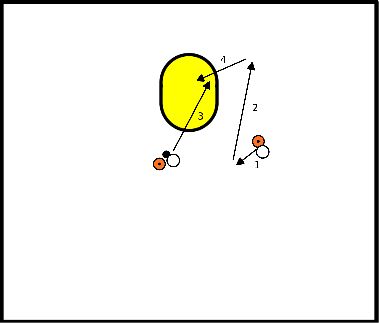
- Keeping space in the box, through running lines in a square
- Timely replenishment of vacant position, timing running moments.
- Passing ball at pace to next player.
- Player 1 plays to 2 -> runs after own ball at reasonable pace;
- Player 2 plays directly to 3 -> runs at reasonable pace after own ball;
- etc.
- The ball pace goes up slowly.
- When the children have this under control, the ball goes the other way.
Eventually, players should always be able to get to the empty spot just in time, because the pace of the ball is almost faster than that of the players.
Playing tight balls is a requirement here.
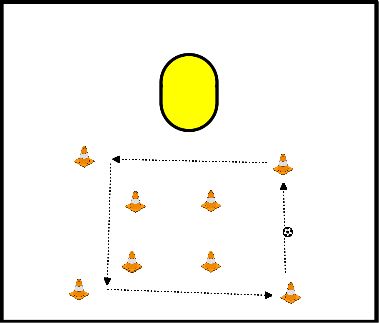
Step 1:
- Player Red defends Player Blue.
- Player Blue has the ball and then throws it to Player White and runs deep and shoots.
- Follow Step 1 and after Player Blue runs deep, Player White rushes in for a giveaway.
- Player Blue goes for a pass through Blue.
- Player Red continues to defend, but allows the through ball.
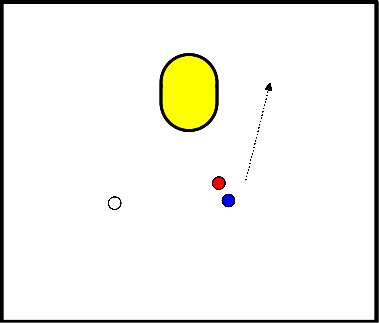
Minimum 3 groups of 2.
Maximum 5 groups of 3 or 4 groups of 4.
- Each group has a basket.
- Number of balls depends on how many groups. For example, 3 groups 2 balls.
- Make easier by fewer balls and larger groups.
- the back player cuts in to the support as the ball enters the field and gets it played.
- the passer simultaneously runs across the support to the rebound and takes over.
- the support passes the ball to the diagonal player in the break and takes the shot
- If that is not successful, the ball can be passed to the outgoing first rebounder
